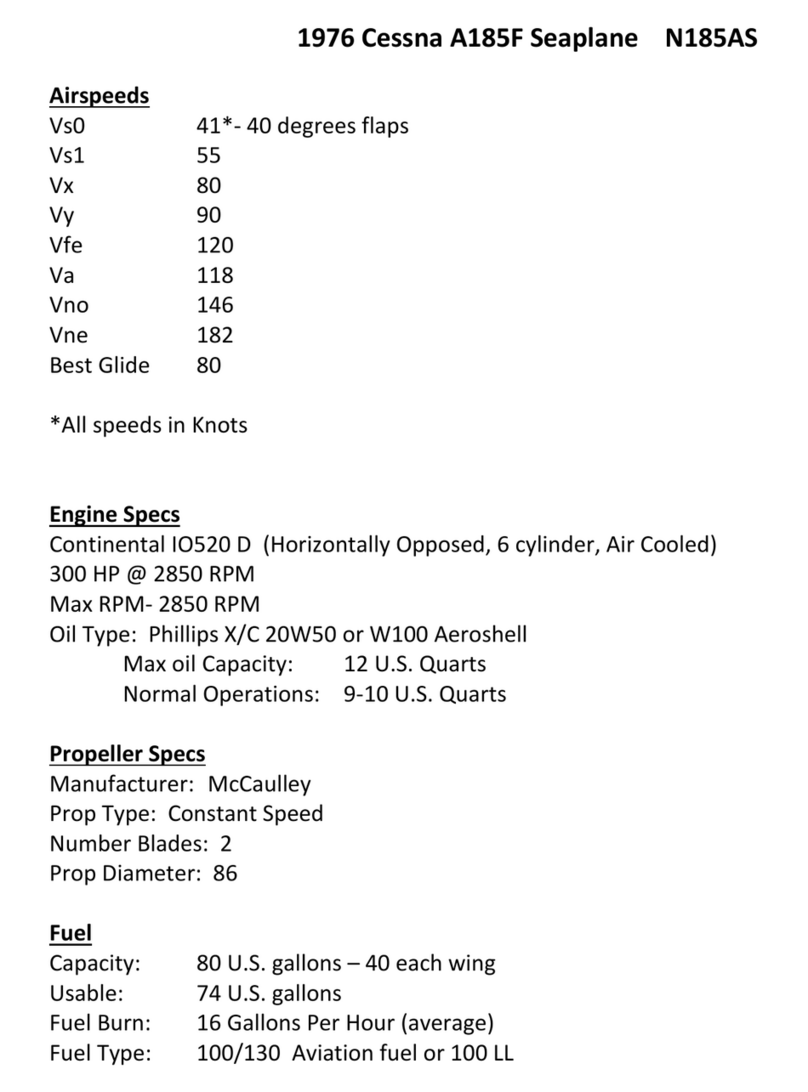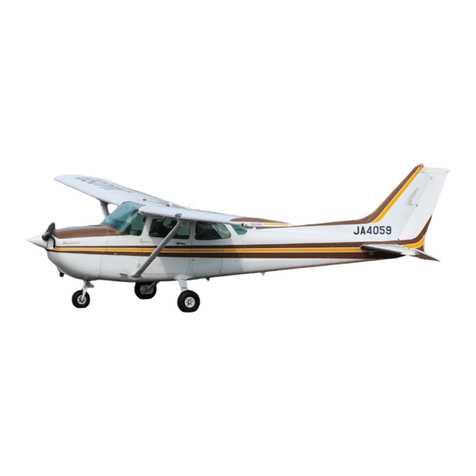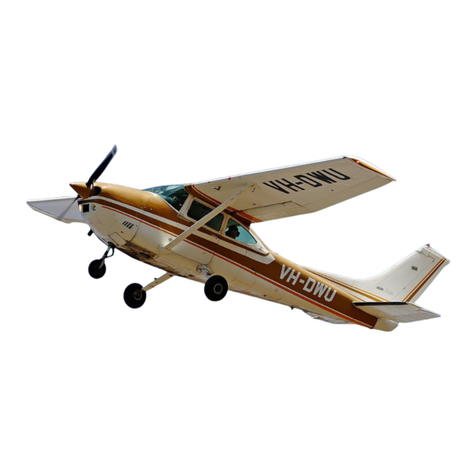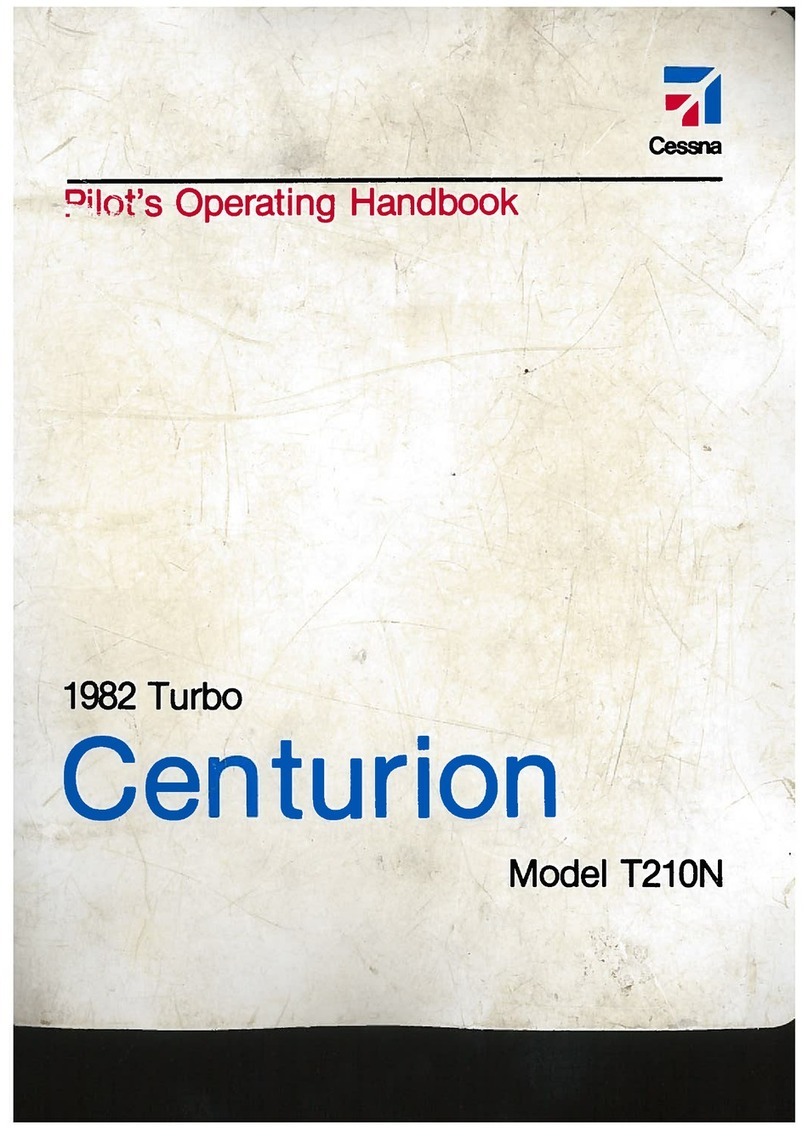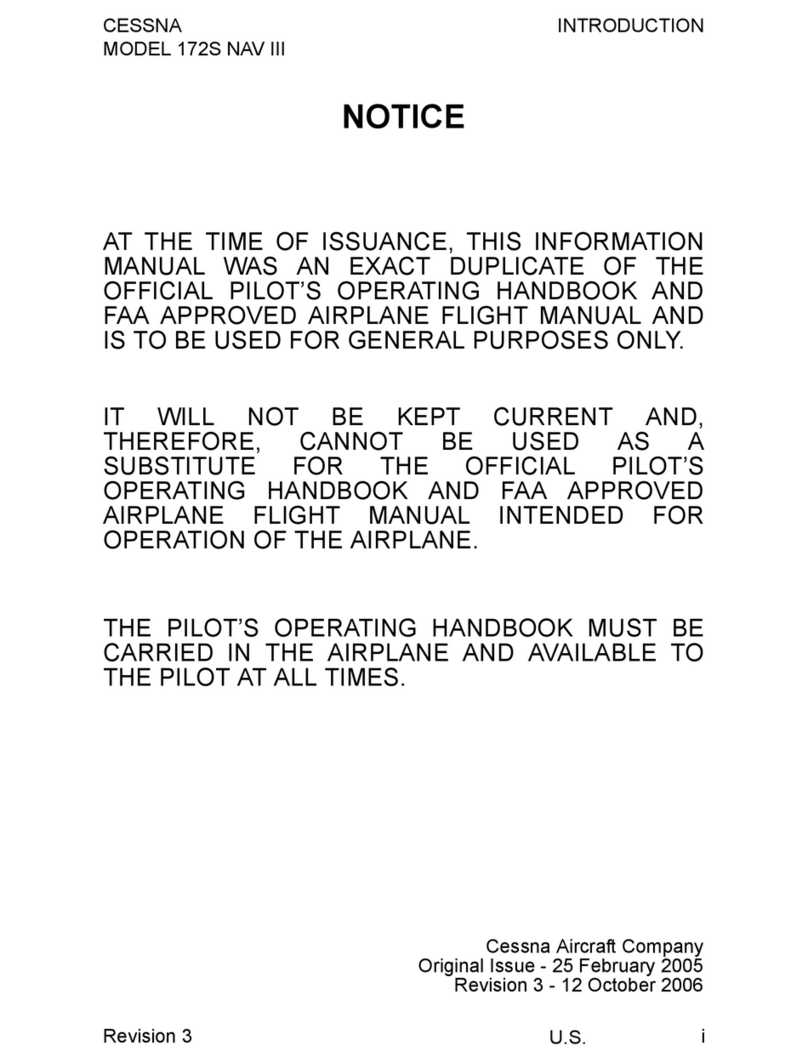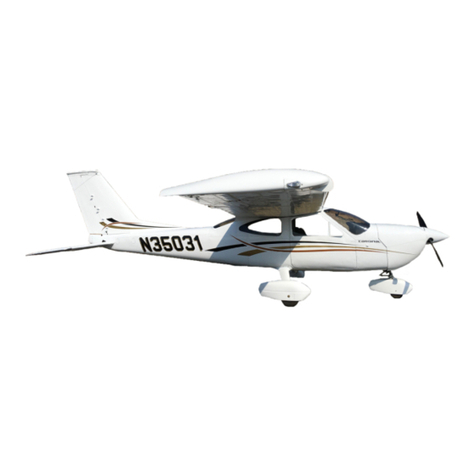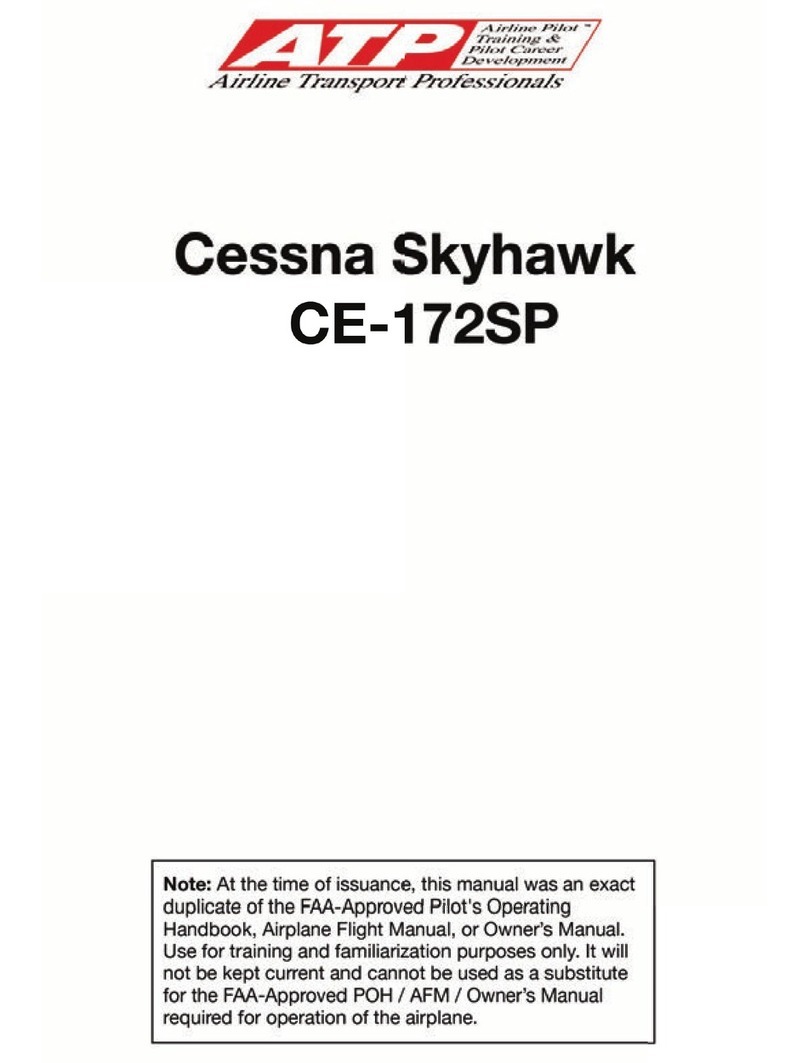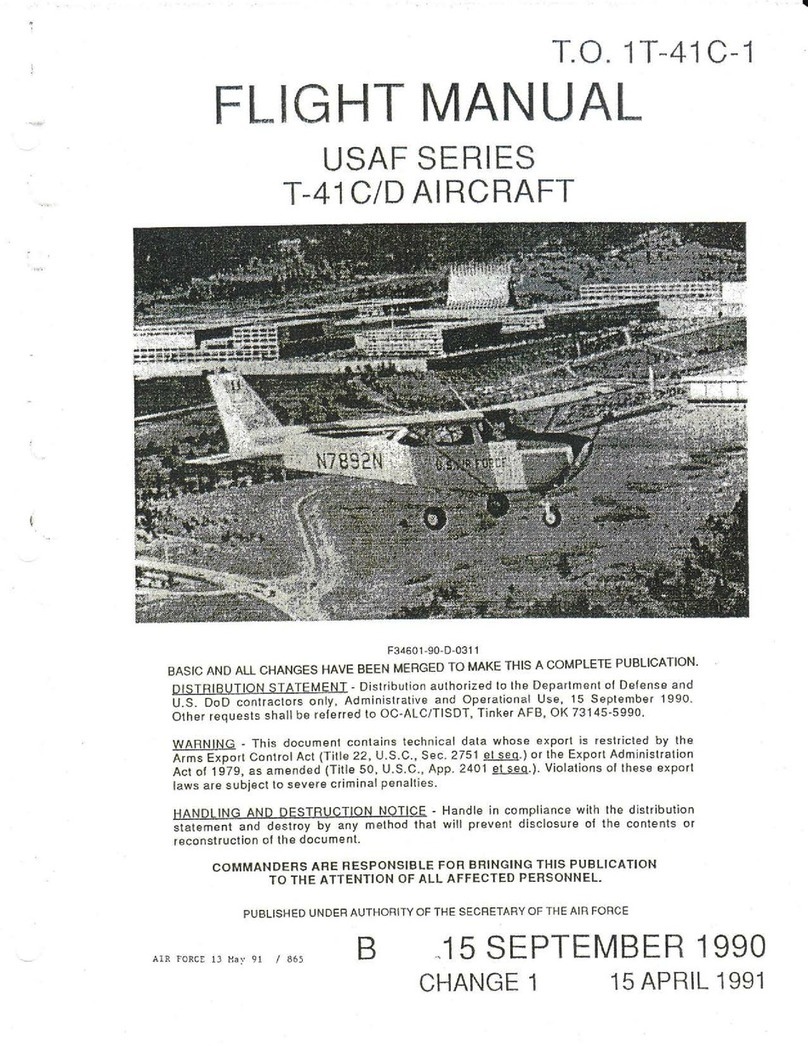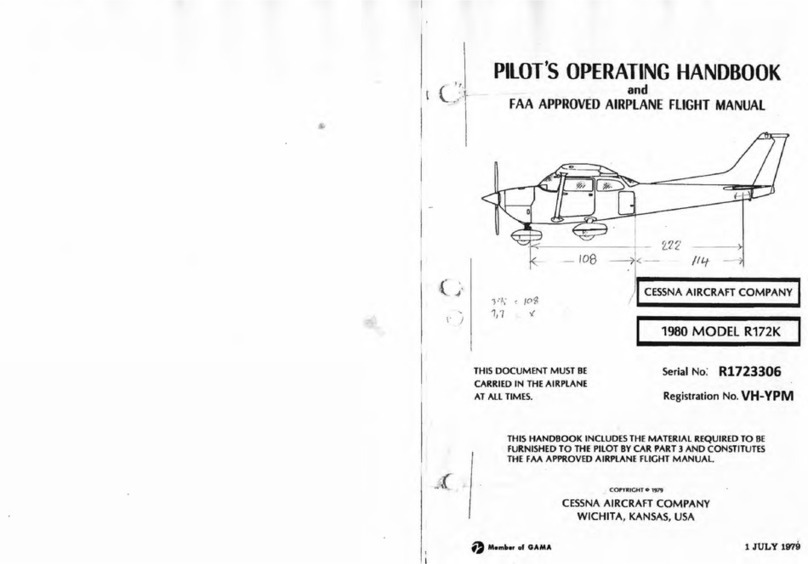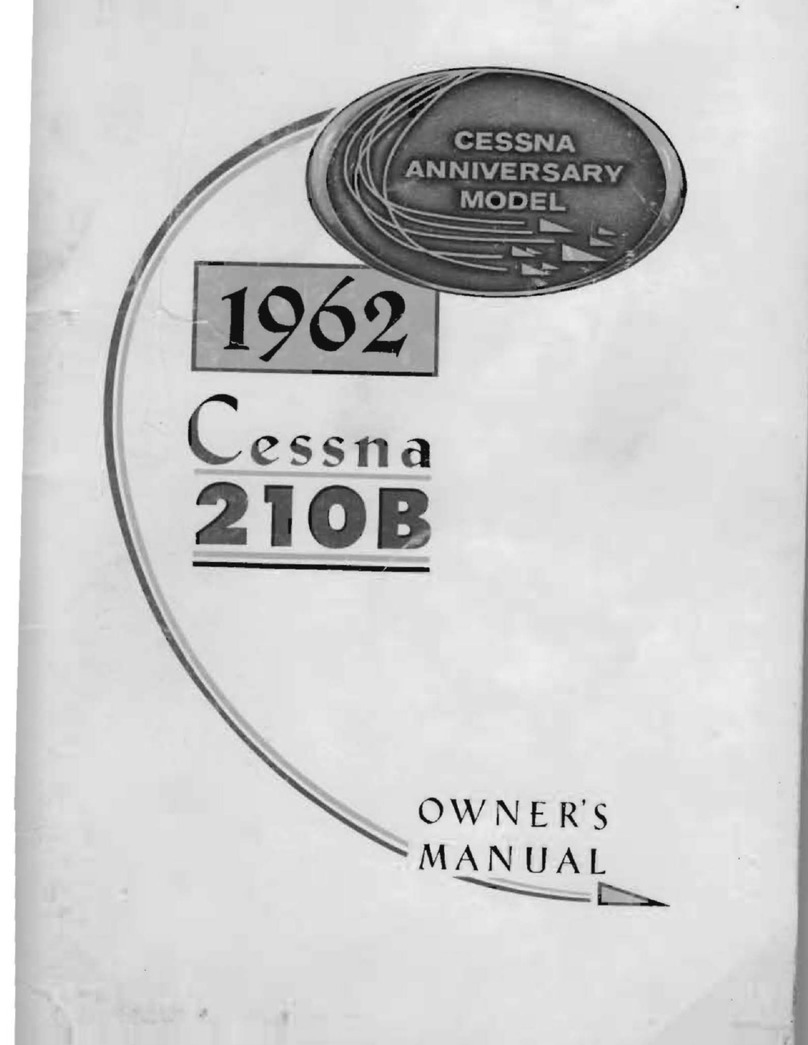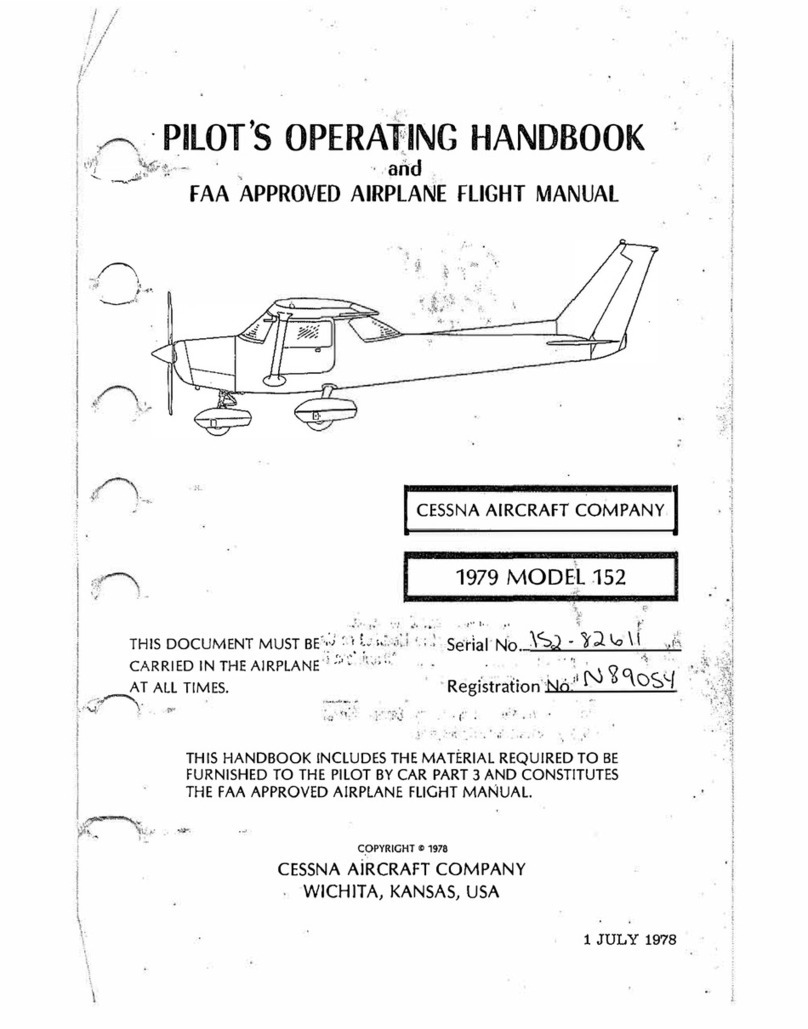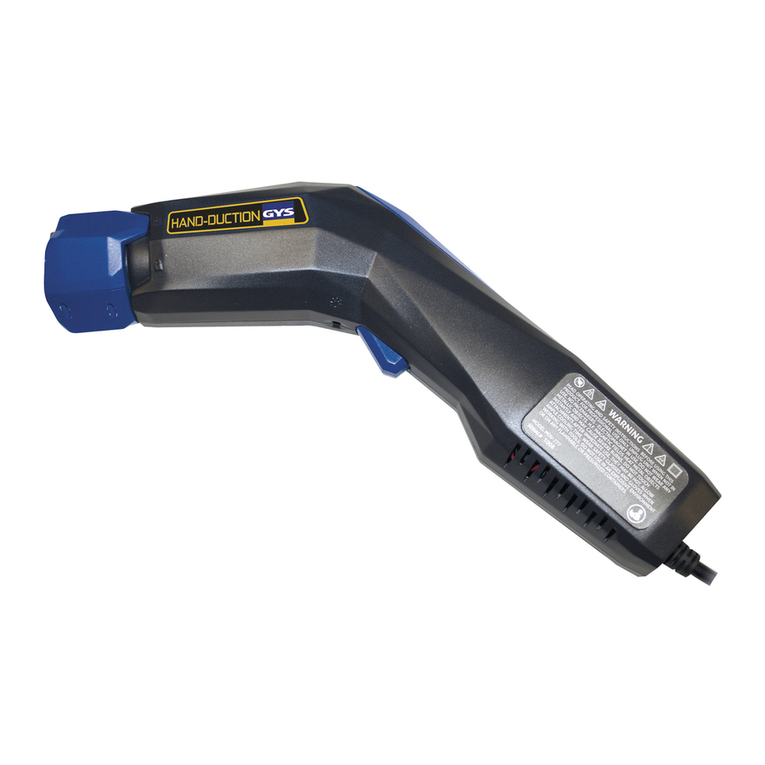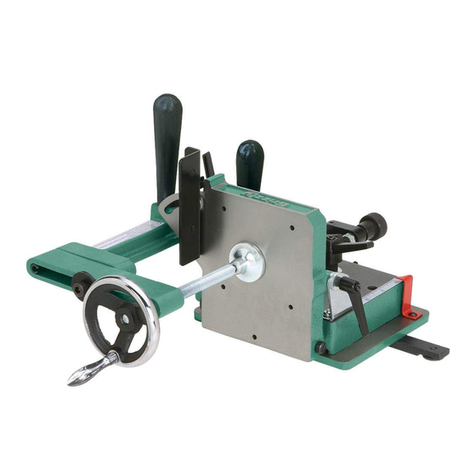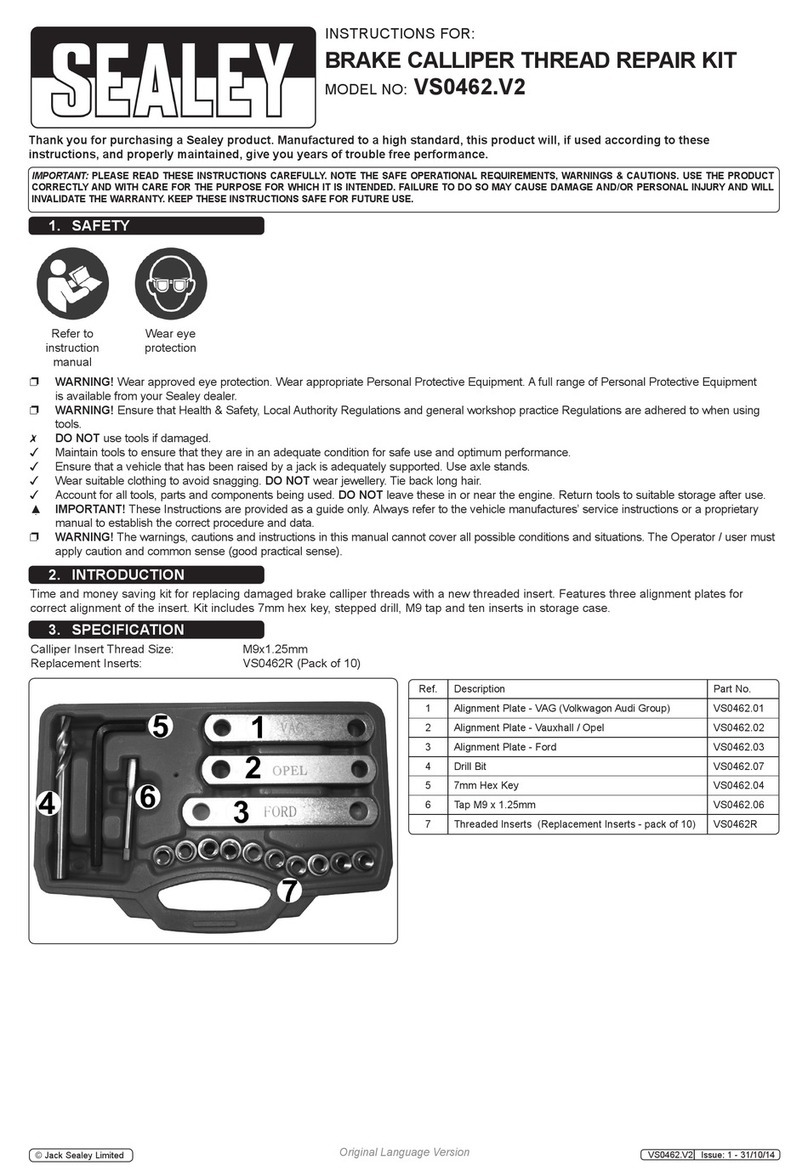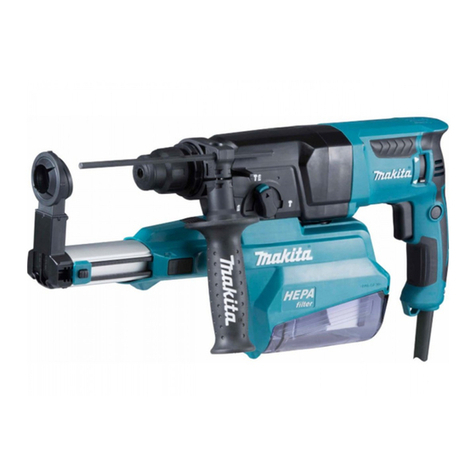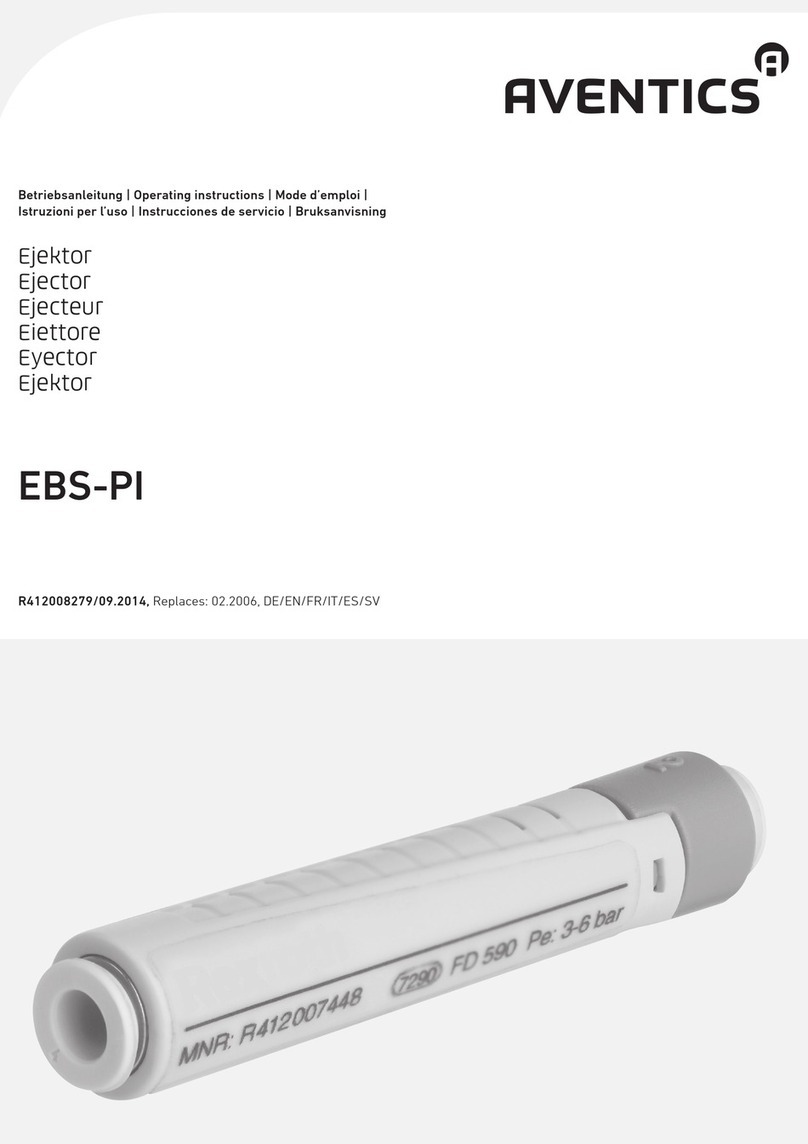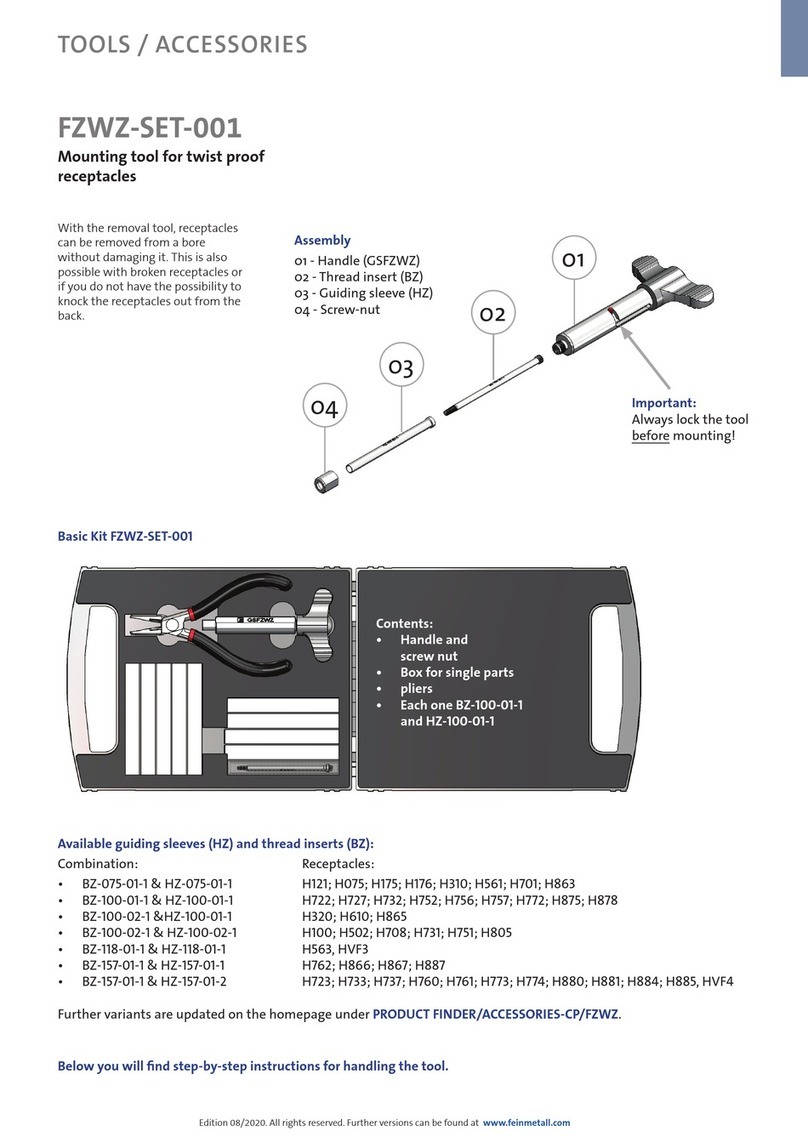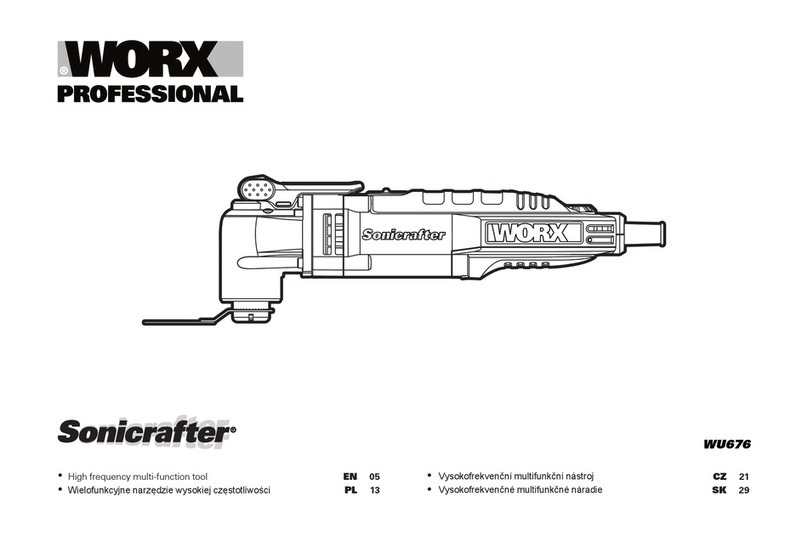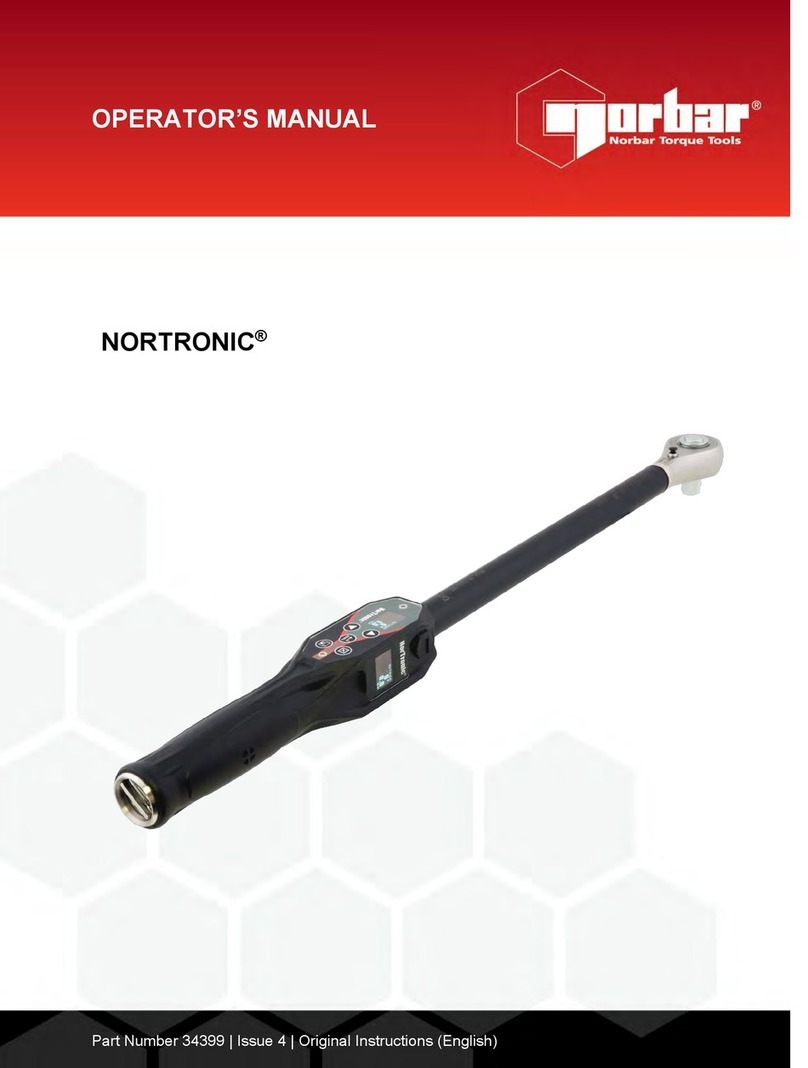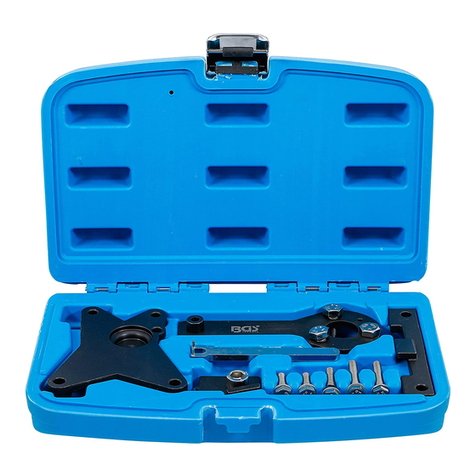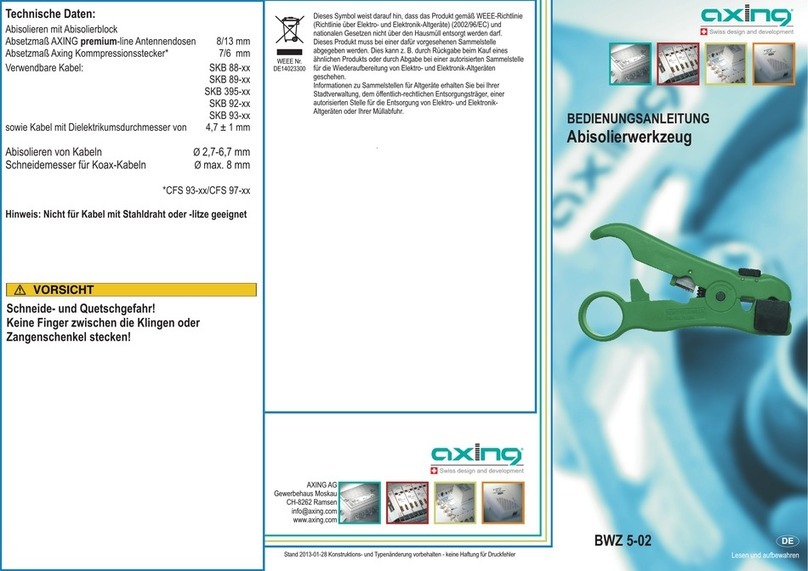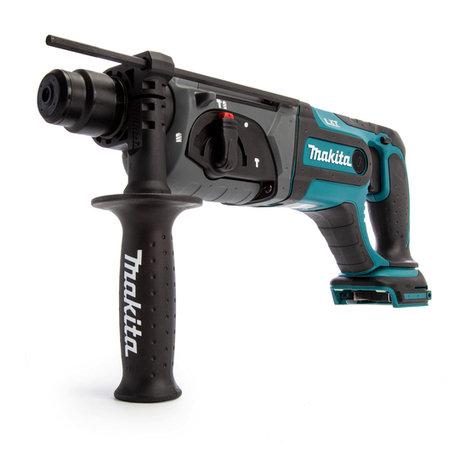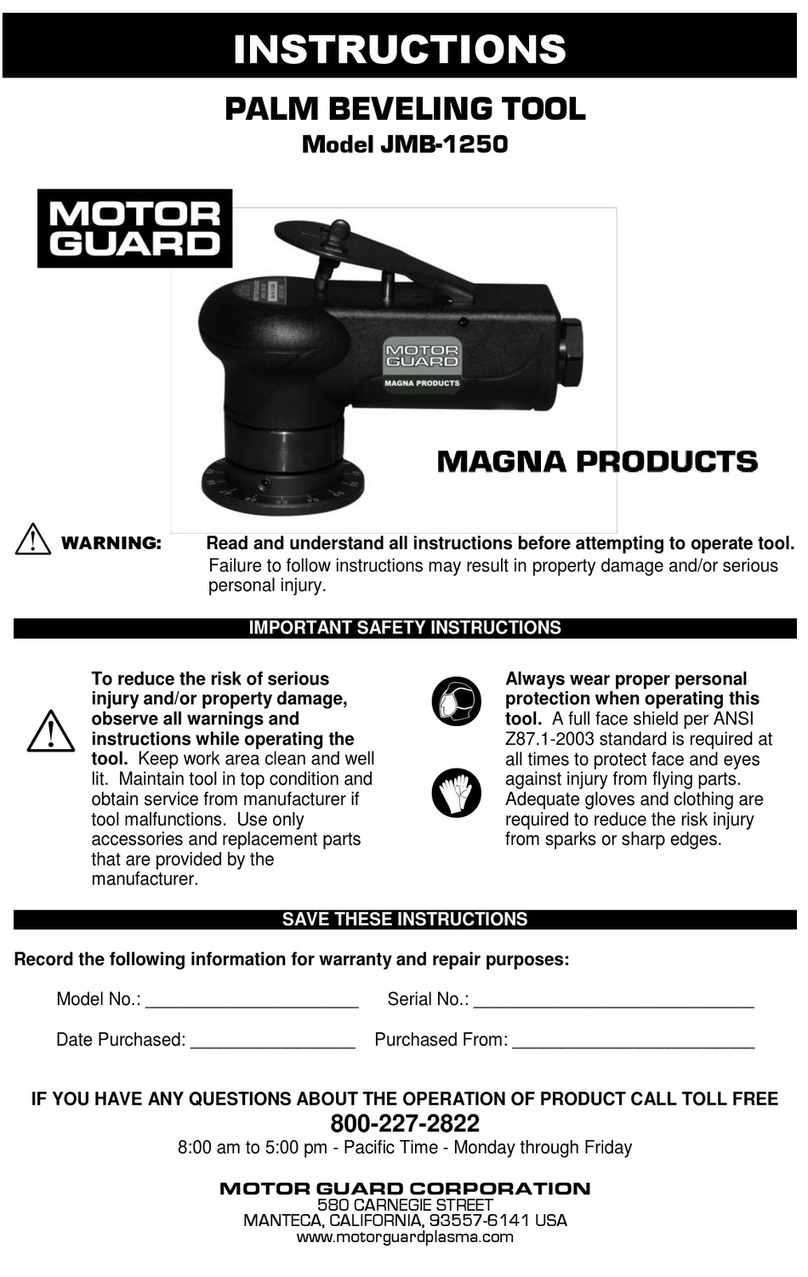
TAXIING.
The carburetor air heat knob should be pushed full in during all grourxc
operations unless heat is absolutely necessary for smooth engine operation.
when the knob is pulled out to the heat position, air entering the engine is
not filtered.
Thxiing over loose gravel or cirxCers should be done at low engine
speed to avoid abrasion and stone damage to the propeller tips.
BEFORE TAKE-OFF.
.Since the engine is closely cowled for efficient in-flight cooling, pre_
cautions should be taken to avoid overheating on the ground. FuIl throtile
checks on the ground are not recommended unless the pilot has good reason
to suspect that the engine is not turning up properly.
The magneto check should be made at 1200 RpM with the propeller
in Jlat pitch as follows: Move the ignition switch first to "R" position and
note RPM. Then move switch back to "Borlil position to clear the other
set of plugs. Then move switch to "L" position and note RpM. Ttre dif-
ference between the two magnetos operated singly should not be more than
50 RPM. rf there is a doubt concerning the operation of the ignition sys-
tem, RPM checks at a higher engine speed wiII usually conrirm whether
a deficiency exists.
An absence of RPM drop may be an indication of faulty grounding of
one side of the ignition system or should be cause for suspicion that the
magrreto timing has been "bumped-up" and is set in advance of the setting
specified.
TAKE-OFF.
It is important to check fuIl-throttle engine operation early in the take-
off run. Any signs of roirgh engine operation or sluggish engine accelera-
tion is good cause for discontinuing the take-off.
firII throttle runups over loose gravel are especially harmful to
propeller tips. when take-offs must be made over a gravel surface, it is
very important that the throttte be advanced slowly. This allows the air-
2-6
plane to start rolling before high RPM is developed, and tle gravel will be
blown back of the propeller rather than pulled into it.
Most engine wear occurs from improper operation before the engine
is up to normal operating temperatures, and operating at high powers and
RPM's. For this rea"son the use of maximum power for take-off should be
limited to that absolutely necessary for safety. Whenever possible, reduce
take-off power to normal climb power.
Normal take-offs are accomplished with wing flaps up, cowl flaps
open, fuIl throttle, ard 2600 RPM. Reduce power to 23 inches of mani-
fold pressure and 2450 RPM as soon as practical to minimize engine wear.
Using 20" wing flaps reduces the ground run and total distance over
the obstacle by approximately 20 per cent. Soft field take-offs are per-
formed with 20' flaps by lifting the airplane off the ground as soon as
practical in a slightly tail-low attitude. However, the airplane should
be leveled off immediately to accelerate to a sa-fe climb speed.
If 20o wing flaps are used for take-off, they should be left down until
all obstacles are cleared. To clear an obstacle with wing flaps 20 degrees,
the best angle-of-climb speed (60 MPH, IAS) should be used. If no ob-
strrrctions are ahead, a best "flaps up" rate-of-climb speed (90 MPH, IAS)
would be most efficient. These speeds vary slightly with altifude, butthey
are close enough for average field elevations.
Flap deflections of 30o to 40" are not recommended at any time for
take-off.
Take-offs into strong crosswinds normally are performed with the
minimum flap setting necessary for the field length, to minimize the drift
angle immediately after take-off. The airplane is accelerated to a speed
slightly higher than normal, then pulled off abruptly to prevent possible
settling back to the runway while drifting. When clear of the ground, malre
a coordinated turn into the wind to correct for drift.
cUMB.
A cmising climb at 23 inches of manifold pressure, 2450 RPM (ap-
proximately 7516 power) and 100 to 120 MPH is recommended to save time
and fuel for the overall trip. In addition, this type of climb provides bet-
ter engine cooling, Iess engine wear, and more passenger comfort due to
2-7


